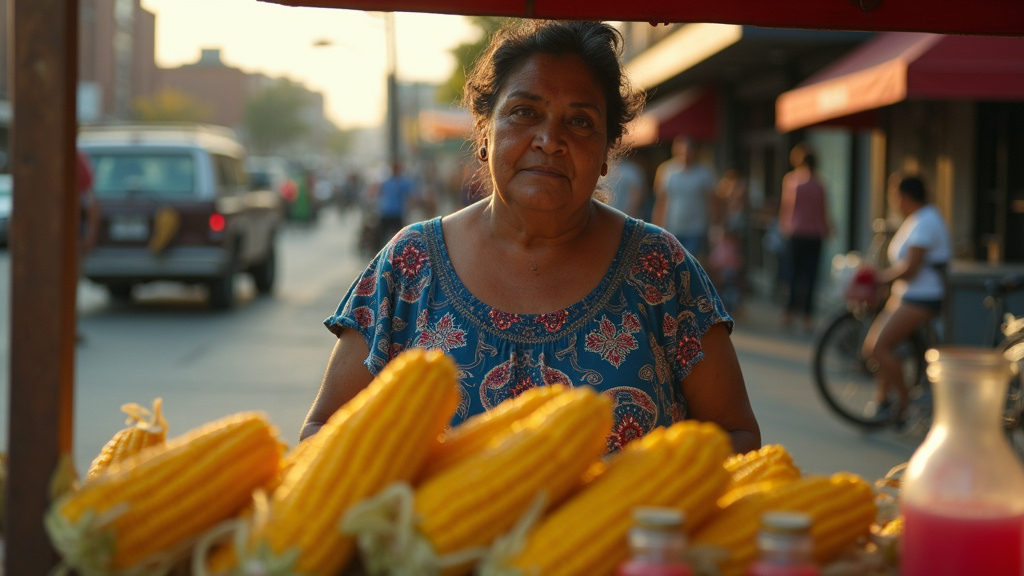CHICAGO – An unexpected online sensation has sparked a wider conversation about urban wildlife and how humans can safely coexist with their wild neighbors. The phenomenon centers around a family of coyote pups spotted in Chicago’s historic Graceland Cemetery and Arboretum, whose captivating presence, documented by photographer Robert Loerzel, achieved widespread virality across social media platforms.
Loerzel’s posts featuring the young canids quickly garnered immense attention. One particular video capturing the pups howling in response to a distant siren proved especially popular, contributing significantly to the surge in visibility. His social media updates collectively accumulated remarkable engagement metrics, including approximately 19,000 likes on BlueSky and soaring to over 2 million views on Instagram.
The sheer cuteness and compelling nature of the coyote pups were widely cited as the driving force behind their online success. The images and videos resonated deeply with viewers, leading to substantial public reaction. Loerzel noted the volume of feedback, reporting over 1,000 comments on his Instagram post alone, reflecting a blend of fascination, concern, and curiosity about the urban coyotes.
The heightened public awareness following the viral posts had immediate, tangible effects. After a report by Block Club Chicago on June 10 highlighted the presence of the pups in the cemetery, Graceland Cemetery initially implemented a temporary ban on dogs. This measure aimed to protect both the cemetery’s canine visitors and the denning coyote family during a sensitive period. However, the cemetery soon adapted its approach, replacing the original ban signage, which also warned of potentially aggressive parent coyotes protecting their young, with educational materials.
The new signage prominently features tips provided by Project Coyote, a national organization dedicated to promoting coexistence with coyotes and other carnivores. These practical guidelines offer valuable advice for pet owners and visitors navigating areas known to be frequented by coyotes. The Project Coyote tips emphasize strategies such as avoiding letting dogs chase coyotes, maintaining awareness of surroundings, and exercising caution, particularly advising against walking small dogs at dawn or dusk when coyotes are typically most active.
Robert Loerzel, the photographer who brought these particular pups into the spotlight, is no stranger to documenting the city’s wild residents. He has been photographing Chicago coyotes since 2018, developing a keen understanding of their behaviors and movements within the urban landscape. His long-term observation provides valuable context for understanding the dynamics between humans and coyotes in densely populated areas.
The presence of coyotes in urban environments like Chicago is a testament to their remarkable adaptability. These intelligent canids have successfully navigated the challenges of city life, finding resources and shelter alongside millions of human inhabitants. Understanding their natural history is crucial for fostering harmonious coexistence.
Coyote mating habits typically occur in the early months of the year. Following a gestation period, pups are born in dens, often located in secluded areas like parks, cemeteries, or patches of woodland. The pups remain dependent on their parents throughout the summer, rapidly growing and learning essential survival skills.
Remarkably, coyote pups reach adult size within approximately nine months. As they mature, they often disperse from their natal packs. This dispersal typically happens in their first fall/winter or the following mating season, as young coyotes seek out their own territories and potential mates. This natural cycle means the family dynamics observed in the spring and summer are temporary, with individuals eventually moving on.
The Graceland Cemetery incident serves as a microcosm of the larger challenge and opportunity presented by urban wildlife. It highlights the public’s fascination with nature, even in unexpected places, and the need for informed strategies to manage interactions. By replacing punitive measures with education based on expert advice from organizations like Project Coyote, authorities and communities can promote safer environments for both humans and wildlife.
Ultimately, the viral journey of the Graceland coyote pups, from quiet den to international online fame, underscores a fundamental truth: urban spaces are shared habitats. Learning about the lives and behaviors of creatures like coyotes, respecting their space, and following expert guidance are essential steps toward ensuring that humans and wild animals can continue to live alongside each other, even in the heart of a major city.











